Humbert sinks Alcaraz in Paris
return strategies — backhands — surface sensitivity — adaptations
A brief mid-tournament recap, if only to highlight a technical change in Alcaraz.
Ugo Humbert played big in Paris on Thursday to upset Carlos Alcaraz 6/1 3/6 7/5 in the third-round of the Rolex Masters.
Humbert got the perfect start, racing to a 5-0 lead with a flurry of aggressive forehands and some clever returning. Observe how he shuffles over and offers Alcaraz the wide serve, before taking it away on the split-step after Alcaraz has tossed the ball. This stretch forehand would earn him the initial break.
Here’s the split-step adjustment slowed down. It’s subtle, but it’s a great example of how players can influence serve direction with their positioning.
The crowd was absolutely electric from the start, with Ugo’s early shotmaking providing plenty of amps. Matt Willis’ (
) tweet captured the scene.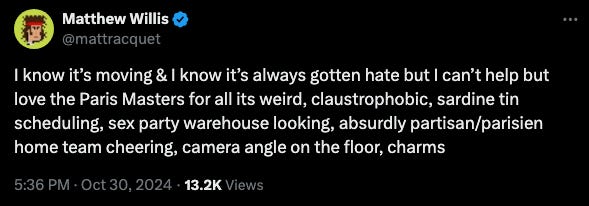
The other interesting thing was that Alcaraz has made a backhand adjustment. In an era increasingly being defined by the sheer speed of play and frenetic shot selection, the Spaniard is tinkering with a Tomas Machac-inspired setup, where the left arm is extended early in the take-back phase, lowering the racquet head and shortening the swing.
It only really came to my attention when watching court level highlights this week, but on closer inspection this has been several months in the making. It may be that the speed and low bounce of Paris in particular has made Alcaraz accentuate the new move even more. Or it may be that the speed of all surfaces, plus the general meta of players being aggressive (the type of player to trouble Alcaraz is someone who rushes him and thwarts his offensive opportunities — Sinner, Machac, Dimitrov, Humbert, Tiafoe, Struff come to mind. Oh, and Ugo Humbert!), has meant Alcaraz has been experimenting and implementing this slowly over weeks. Or the kid may just be intuitively adjusting on feel. I certainly have no idea. But it is a mark of champions that they are always chasing improvements — they value mastery — and so it doesn’t really surprise me that a two-time slam winner this season is thinking “let’s tweak the backhand and see what happens”. Champions adapt. Tennis is played with the legs, but it’s also an arms race.
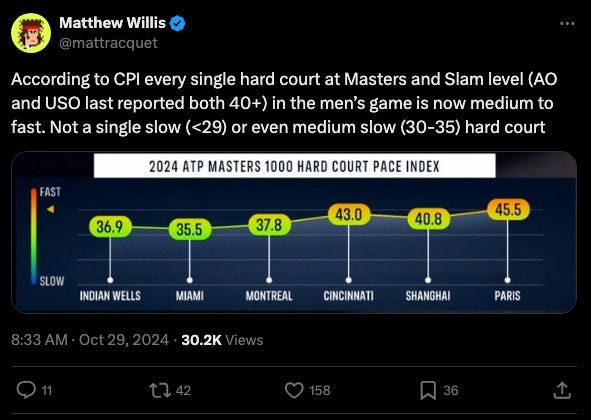
My first impression after this tournament is that his backhand wasn’t all that great. Maybe Ugo had a lot to do with that. Maybe the court did as well.
"When I played the first match, the stats came out that it is the fastest court in the Masters 1000, probably on the tour right now. This is crazy. I don't know. Probably and the fastest one, you know, in the last ten years in this tournament."
“He [Humbert] plays probably every time at his 100 per cent, really flat. So I couldn't play a good tennis.
“I practised [indoors] at home, but it isn't the same court, or the speed [of] court… So I wasn't surprised about my level, about my game, but I was surprised about everything a little bit.”
— Alcaraz post-match
It’s hard to know if this is a short-term adjustment for the indoor season or if it will be carried over onto slower and higher bouncing surfaces. The tradeoff is that the shorter swing makes it harder to generate racquet speed (and therefore, power), but you can assume a more aggressive court position/be less rushed.
Speaking of compact, Ugo Humbert is a prime example off both wings. Also note how well his off-hand stays with the forehand, ensuring he won’t over-rotate and lose power:
The Frenchman is one of the most surface-sensitive players on tour, excelling in quick conditions, having won six titles to date on quick hard and grass courts. Tonight the elements aligned — form, French fans, fast courts — and Ugo took his chances all the way through.
Humbert also used a very wide serve position on the ad-court to accentuate his leftyness, peeling Carlos wide into vowel-heavy European sponsors, or burning him up the tee for good measure.
The third set was brilliant tennis from both. Ugo kept Alcaraz under the pump, who at times retrieved balls with a degree of agility and hand dexterity that even the partisan crowd couldn’t resist cheering:
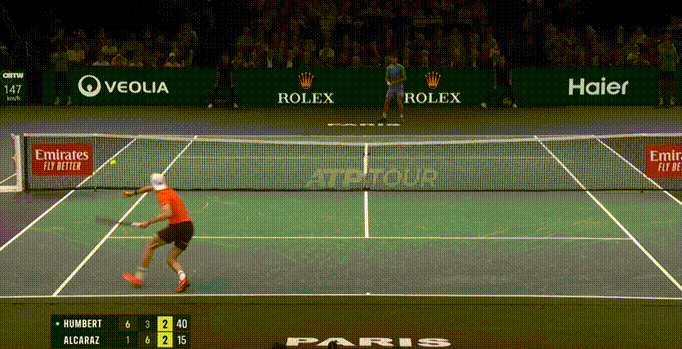
A few games later and the British umpire was asking the French crowd to stop a Mexican wave so that the Spaniard could resume proceedings.
Alcaraz rewarded them promptly, playing a collection of shots that only he could reckon and execute within close proximity of the lines.
Well, maybe that’s been done before.
At 4-4 in the third set a stat flashed on screen:
Tennis Insights says “Steal score calculates how often a player has won the point when they are in defence during the point”
Humbert, seemingly privy to the telecast, appeared to take offence, producing his best defensive efforts of the match at 5-5; a game where Alcaraz made a big push to break, and who will be ruing the volley he didn’t quite fade well enough:
Serving to stay in the match at 5-6, it was the Alcaraz backhand that buckled, sailing long to give Ugo a famous win in Paris.
Humbert takes on Jordan Thompson in the quarterfinals later today.
That’s all for now. HC.
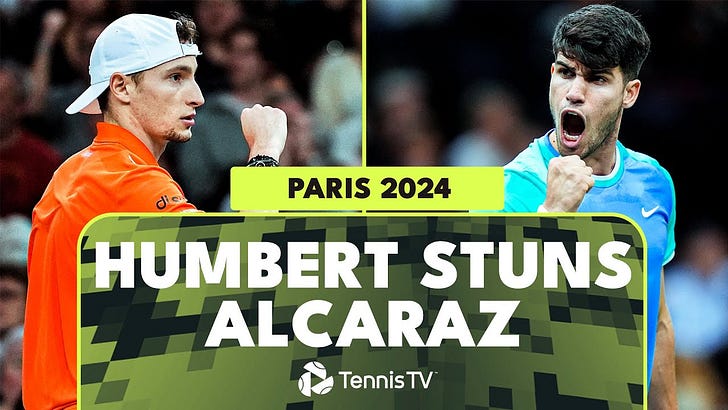


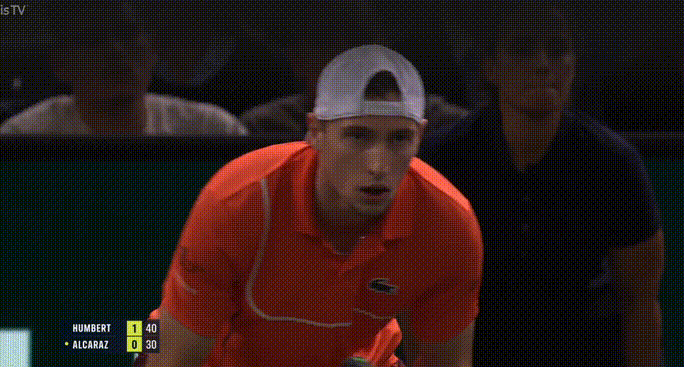

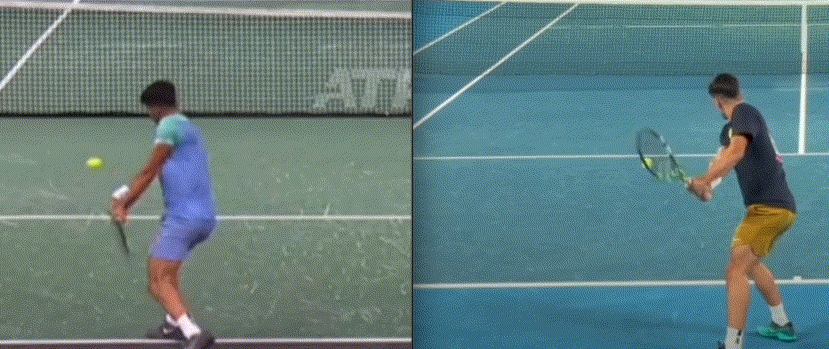



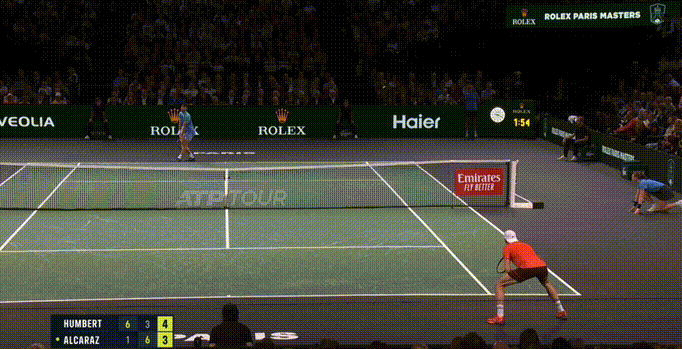

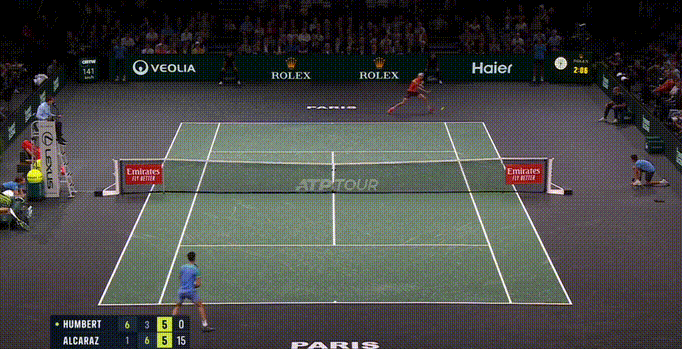
This is probably the last big hurdle for Carlos...fast courts.
Are there players that have different ground strokes per surface (compact for fast, longer swing for slow) and switch back and forth seasonally effectively? Or are the players who are effective across surfaces just ones who have a style that suits all surfaces?